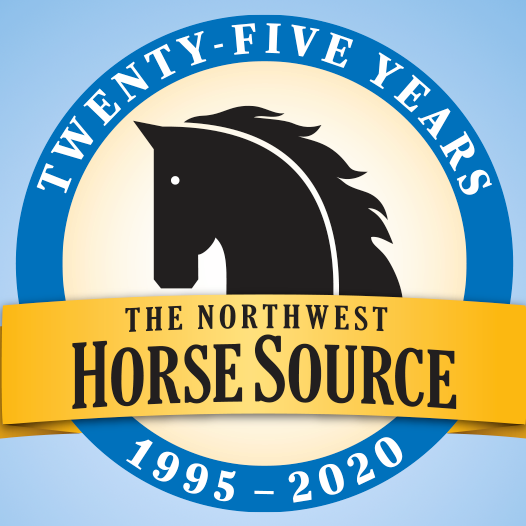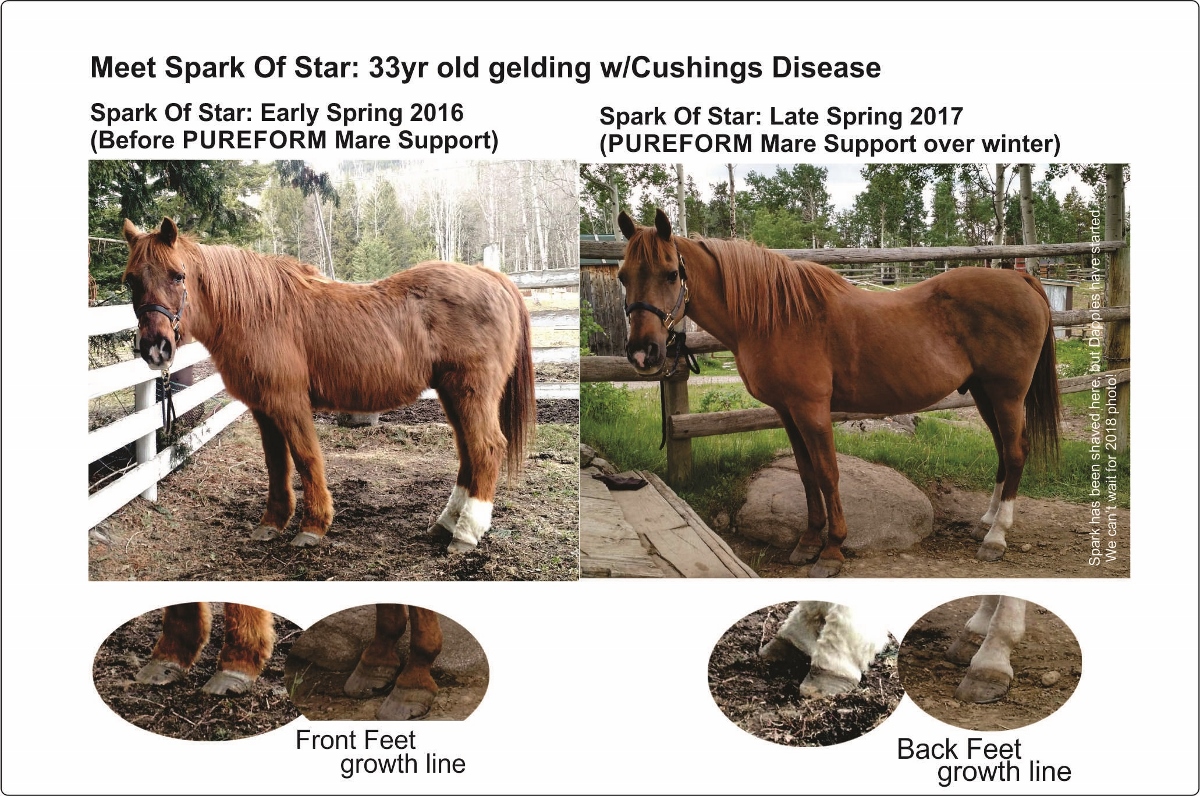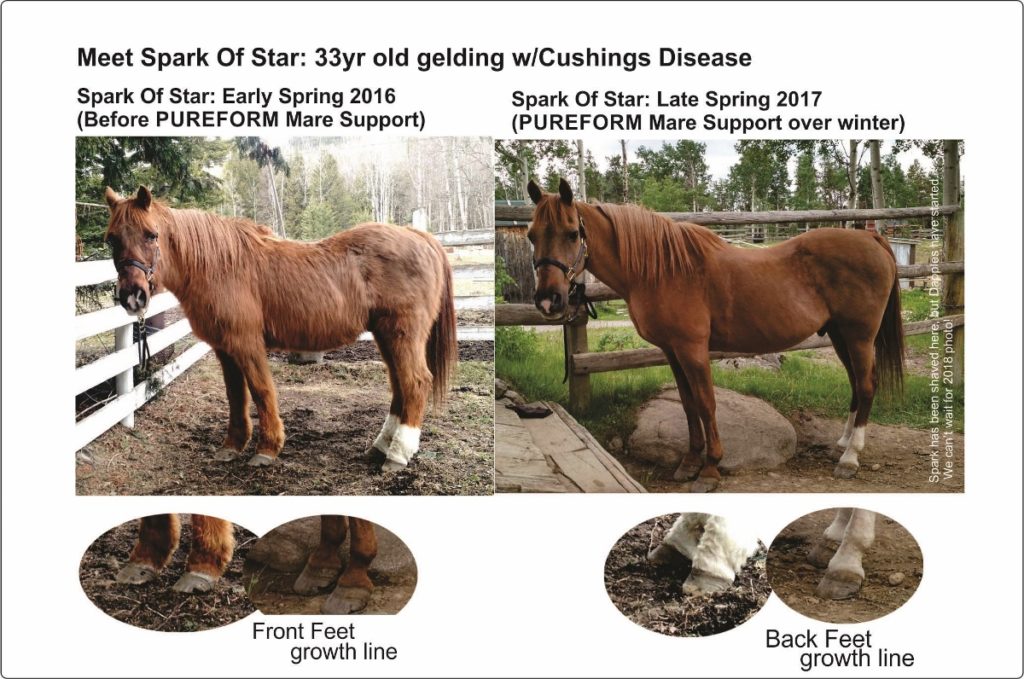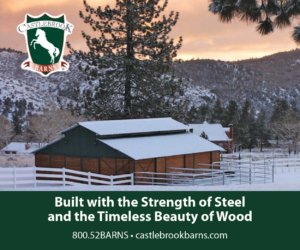What if you were told “simplifying” the meal is easy and may be better for your horse’s GI tract and mind?
Take a moment or two to imagine what simplifying means to you and your horse. What would that meal in a feed bucket look like? I ask these questions because most active horse riders/owners are supplementing and choosing feed mixes for the symptoms their horse is showing instead of reducing or removing what could be causing behavioural or physical issues. What if you were told most symptoms your horse is showing can dissipate or disappear in as little as a couple of weeks if you use equine husbandry and common sense to simplify the equine diet?
To simplify the diet you need to break it down to understanding the very basic “need” for the equine body and mind: What is the base of every horse’s diet?
Basic Need #1 – Hay and or live grass “is” the most important, agreed. Your horse, any horse, wild, domestic, stalled or pastured, naturally grazes with head low for 20 hours a day with the small stomach emptying every 45 minutes. When a horse does not have access to forage/roughage for more than 2 hours, the stomach acids build up, causing unbearable pain, burning the stomach lining and eventually working up the esophagus creating ulcerous damage. No matter what your feeding schedule is, grazing is the most needed important function for the mental and physical health of the domestic horse, especially if you want to keep your horse’s stomach happy and ulcer free! This is the reason hay bags have increased in popularity for stalled, dry lot or any limited grass grazing, not solely for the horse with a metabolic issue.
Basic Need #2 – Water. To ensure horses drink their minimum of 5-8 gallons (24-36 liters) of water every day and no matter what the weather. Your first mandatory supplement is Iodized SALT (sodium chloride). It is preferred by the knowing horseman to feed a daily 1 ounce (24 grams/3 tablespoons) of loose iodized white table salt to encourage the recommended water intake during the wind and rain and especially snowy days. You may note that Sodium Chloride is the majority ingredient in every electrolyte formula because it is that important.
If you choose the salt block, rock or loose mineral supplement, it may not be sufficient unless you can absolutely guarantee that each horse is ingesting a minimum of 1.58 lbs (720 g) every month. Water/Salt intake is the best defence against almost every type of Colic and the veterinarian bill that goes along with the painful distress and possible death of your horse. If you do not feed other supplements, or even if you do, iodized salt should be the first on your equine shopping list and the key to digestive success.
Basic Need #3 – Calcium and Phosphorus. Two of most overlooked and misunderstood nutrients to a successful equine diet is Calcium and Phosphorus. The only way to determine if your horse is getting the proper ratio of 2 parts calcium to 1 part phosphorus is to ask for the crop analysis from the hay supplier. Even if you frequently purchase from the same supplier/grower, this analysis is needed as these values can change from year to year and harvest to harvest. If the analysis is not available, take the initiative to find a laboratory to guide you through the simple steps to pull hay and send it in for a relatively low cost microbial analysis (under $40.00). Your veterinarian should also be able to provide a local lab name or contact number.
Why are Calcium & Phosphorus so important? While people with performance horses, breeding, lactating or growing horses (within the first two years) look for the benefits of a higher protein ratio (14-18%), it is more important that the roughage choice or combination of grass hay types and/or an alfalfa mix provide the preferred ratio (2:1) of calcium:phosphorus. Calcium is highly absorbable through the upper section of the small intestine. It plays major roles in nerve transmission, the body’s ability for blood clotting and temperature regulation, as well as regulating healthy muscle functions, including preventing tying-up. Phosphorous is needed for a wide variety of cellular functions and energy metabolism. Though calcium shows no adverse effects if given in higher levels, it is high levels of phosphorous that should be assessed and avoided as too much phosphorous in the diet limits the absorption of calcium giving risk to thyroid issues, weight loss and possible skeletal problems.
What physical differences will you see when the Ca:P ratio and water intake is correct? No matter the age of the horse, within a month or two you will start to see physical changes as well as behavioural changes, including improved willingness and more controlled mare cycling attitudes. Take before and after full body profile pictures. That “dropped hay belly” and “dropped top line” will come up, showing a fuller muscled and more put-together profile. You will also see reduced length and coarseness of the winter coat for the preferred shorter, fuller, softer and warmer coat. Young horses will grow more evenly rather than bum high, sea-saw growth and have less loose manure.
What do you feed to make up for the needed nutrients if you choose to feed a grass mix hay with low Ca:P and no bagged feed mixes? (Note: all harvested grass hay is very low in Calcium and Phosphorus while alfalfa (legume) is traditionally high). This is your new simplified feeding program that has worked wonders on thousands of horses making the switch off every variety of bagged feeds (extruded, cob, sweet-feed, high fat/fibre, senior ration, foal growth, etc.) while making your horse happier and saving your money:
Grass Hay (any type), if not in a feeding hay bag then 1-2 (8-12 lb) flakes every 4-5 hours. (yes, questions are rising about low NSC/sugar (under 12% NSC tested or soak hay for 1-2 hours).
Recommended Feeding: Once or Twice Daily ration for adding other nutritional or Joint supplement powders:
- 500 grams (approx. 2 cups) of triple cleaned Whole Oats and 500 grams (approx. 2 cups) Alfalfa Pellets. This amount of oats is not enough to cause health issues or hyperness and provides more benefits than soy beans and soy hulls. For IR, metabolic horses and ponies: Feed ½ cup oats with Beet Pulp and 1 cup alfalfa pellets.
Dampen the oats or pellets with water (no need to soak the oats, just spray so salt and supplements will stick) then add:
- ½ oz (1 ½ tblsp) white iodized salt
- Fat Content if needed for Cool Energy, body condition and coat: ½ cup Golden Stable Milled Flax (flax is 38-40% fat and the highest in Omega 3 EFA plus great natural fiber). Stable Milled Flax has an 18 month shelf life and more if it sealed in an airtight container, unlike ground flax’s short 24 hr freshness life span before rancidity starts. Golden Flax contains the highest percentage of Omega 3 essential fatty acids while the darker brown contains the least. If horse is in heavy training or a hard keeper, you can safely increase to 1.5 cups of Milled Flax twice daily for great results in body condition, mind, joints and cool energy. Yes, you can feed any other high Omega 3&6 fat product (2:1) if you prefer but it is not advantageous to use only fat sources from 100% canola or vegetable oil as they are high in Omega 6 with little to no Omega 3 support.
- Vitamin/Mineral Concentrate Powder for Grass and or Timothy Hay mix:
If you are feeding a majority of local grass hay or timothy mix, look for a supplement that boosts the daily Calcium intake to over 6,000 -7,000 mg and Phosphorus to 3,000 – 4,500 ratio to 2:1.
- Vitamin/Mineral Concentrate Powder for Alfalfa hay or lush pasture diet:
If you are feeding a majority of an alfalfa hay (40% or higher) look for a supplement that has a daily Calcium intake of LESS than 1,500 mg and Phosphorus to a max of 1,000 mg.
- For those of you who really want to know, use the following ingredients and amounts as a guide when checking labels:
With either of the above points #4 or #5 – The other nutrient ingredients should include the following on the label for the DAILY DOSAGE and not per kg (unless you can easily do the math): The essential amino acids L-Lysine 2,000 mg/day and DL-Methionine 1,000-2,000 mg/day to help with top line muscle and the development of a strong, thick, hoof wall and sole. The macro minerals should be complete with Choline (100-200 mg/day), Magnesium (any bonded form as magnesium is the key to increased absorption of all nutrients, used for calming and reducing any neck cresting and fatty deposits) (1,000 mg – 5,000 mg/day), Manganese Proteinate/Chelate (100-200 mg/day), Zinc Proteinate/Chelate (100-200 mg/day), Copper Proteinate/Chelate (30-60 mg/day), Iron Proteinate/Chelate (15-40mg/day), Cobalt Proteinate/Chelate (50-200 mcg per day), Iodine/Iodate (1-5 mg/day), Selenium (1-2 mg/day).
Vitamins: All fat-soluble vitamins: Vitamin A (25,000-75,000 IU/day), D3 (6,000-8,000 IU/day) and Vitamin E as an antioxidant, either in a natural form or synthetic, providing a different absorption rate of 25% (1,000 IU – 15,000 IU/day).
Another antioxidant is Vitamin C (ascorbic acid or the buffered form calcium ascorbate at 2,000–12,000 mg/day). Other important vitamins are Vitamin K1 (40-60 mg/day), the full vitamin B complex: B1/Thiamin (60-5,000 mg/day), B2/Riboflavin 25-80 mg/day, B3/Niacinamide (70-180 mg/day), B5/Calcium Pantothenate (80-200 mg/day), B6/Pyridoxine (40-200 mg/day), B12/Cyanocobalamin (200-400 mcg/day). Biotin is important for hoof growth but does little for the thickness of the hoof (2-10 mg/day). Folic Acid can be a plus ingredient for mares (5- 12 mg/day).
This plan is amazingly balanced, very easy if you find the correctly formulated nutritional concentrate and very cost effective especially if you are competing and purchasing other supplements (i.e. Joint or muscle enhancing and digestive). The changes you will see in your horse’s behaviour will be fairly revealing in 5-7 days. The body changes will come within the first month.
This is why, almost twenty years ago, we developed the PUREFORM Equine Health Line of nutritional concentrates that are formulated to easily balance the nutritional deficiencies in the most important (#1) part of the horse’s diet: the forage, whether hay or pasture grass, and provide you with the complete and balanced nutrients your horses body needs, all-in-one formula container. However, you as a horse lover, owner, rider and trainer, have to know and understand the basic needs in order to protect and have a vibrant, willing animal.
Shelley Nyuli, president and nutritional advisor at SciencePure Nutraceuticals Inc.
Telephone: 604-856-6996, Toll Free: 1-877-533-9163, [email protected]

News from the horse industry. Sharing today’s information as it happens. The Northwest Horse Source is not responsible for the content of 3rd party submissions.







